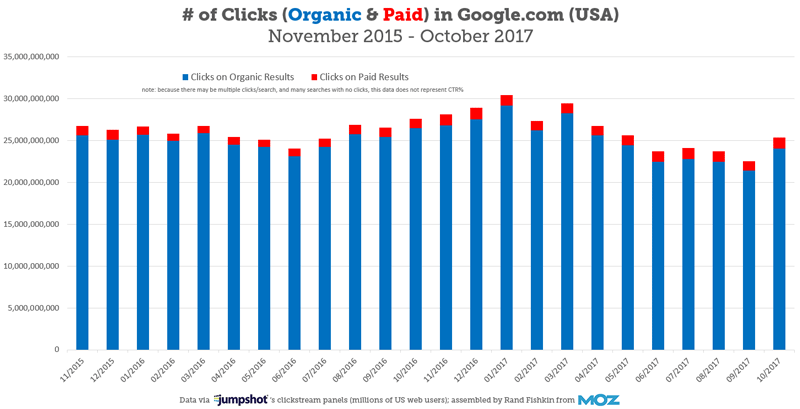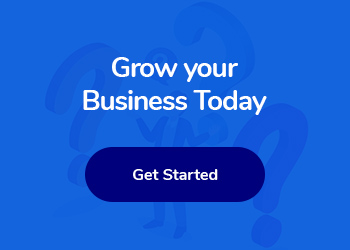5 Differences Between Inbound Marketing and Outbound Marketing
What is the difference between inbound marketing and outbound marketing?
- Methodology: Outbound marketing hinders while inbound marketing attracts.
- Ability to measure results: Measuring results achieved is easier for outbound marketing than inbound.
- Speed: Outbound marketing works fast, but inbound marketing is slow at first.
- Return on Investment (ROI): Outbound marketing is low and inbound marketing is high.
- Durability: Outbound marketing works until you spend money, but inbound makes money forever.
For more in-depth content, this article will compare the two alternatives based on the five variables we saw above.
1) Definition (methodology) : How does it work? What is its essence? What is it based on?
2) Ability to measure campaign results : How accurately can you evaluate the performance of each campaign?
3) Speed – How quickly can you acquire new customers?
4) Return on Investment and Conversion Rate : What is the ROI of either? How many out of 100 will pay attention to your offer?
5) Persistence : How long can you enjoy the good results of your campaign?
At the end of the text, we will in some cases give you a conclusion on which option is best for you.
Outbound marketing , also known as disruptive marketing , is based on messages that interfere with what potential customers do on a daily basis .
It’s pure publicity.
Simply put, outbound is the type of marketing that humans experience on a daily basis .
In the offline world they:
- TV commercials.
- radio spot.
- Billboards on the highway.
- People handing out flyers on the street.
- Vendors approaching you with offers in the middle of the mall.
- Herbalife.
On the Internet, it is:
- Google Paid Content (Advertising).
- Advertise on various social networks: Facebook, Instagram, Twitter and more.
In This is Marketing , Seth Godin has said for years that the most efficient way for a company to spread its message is to buy ads.
The ads worked, they were cheap, and they paid for themselves.
They had a certain reputation for the companies that used it and were also profitable. The money spent was like a new sale.
But that strategy is coming to an end. Advertising is dead.
why?
Godin says the internet was the first mass media that wasn’t invented to make marketers happy.
Television was invented to host advertisements and radio was invented to play jingles, but the web was not built around disruption and masses.
It is the greatest medium of all, but it gives users something valuable: freedom.
Freedom to come and go wherever you want, freedom to belong to or not to belong to another community, freedom to block ads, freedom to ignore me if you wish.
On the other hand, inbound marketing or attraction marketing is to grab the user’s attention, not to make a purchase .
You attract the human without disturbing him .
For example, this happens when:
- I follow social media accounts because a friend recommended it.
- He is familiar with the content of the website, as he really likes the text and videos he publishes on the website.
- He knows everything a company does because he’s in love with everything it stands for (i.e. Apple or Starbucks).
In this context, a brand is a consumer who approaches the brand, not the potential consumer.
With Inbound, you don’t mind the usual “FOLLOW ME, FOLLOW ME, FOLLOW ME”, but fall in love.
how?
In their book Inbound Marketing, current fathers Brian Halligan and Dharmesh Shah point out that this type of marketing is about building strong relationships .
Since these relationships are only achieved through human-to-human interactions, practices like buying followers on social networks don’t make much sense.
“Social media is about being social and building genuine win-win relationships with others without the help of automation software .” – Halligan and Shah on Inbound Marketing
The era of disruption marketing (outbound marketing) is on the decline as users increasingly have the ability to block ads and have complete freedom to choose what they want to consume at any time.
Attraction marketing (inbound marketing) has gained a lot of relevance in recent years. Because the only way to earn people’s respect and admiration is to offer valuable content without the expectation of closing sales overnight.
Difference #2: Ability to Measure Results
Measuring the results achieved is easier for outbound marketing than inbound.
Outbound allows you to get very defined and very specific metrics of how your marketing campaign is going, since it’s mostly paid.
- What was the return on investment?
- How many people has your message reached?
- How is your target audience responding?
Because the big internet platforms (Google, Facebook, Instagram) are interested in paying for advertising, in return they provide very specific data along with lots of details.
They explain what is happening with the money you invest: where each dollar is going and what it is creating in return .
Rand Fishkin says many outdated marketers are still betting on it because outbound is easy to track, measure and analyze.
They know that if you invest X, you get Y.
They have seen the method work and make sure this is the way they want to spend their money as it is a very quick and safe method.
On the other hand , some metrics are difficult to get or specify in inbound .
why?
This is because it is difficult to calculate how many customers an article you publish on your blog will attract at first .
You will know how many people have read it and how many people have read it, but suddenly you don’t know what new sales it will bring you in the short term.
On Google, articles gain relevance and visibility over time.
What’s more, the sale is the result of the joint effort of various contents.
Outbound is a more direct method (display an ad and watch what happens), but less effective in the long run. Few people pay attention to your need to acquire new customers.
Difference #3: Speed
Outbound marketing goes fast, but inbound marketing is slow at first.
Outbound can be more powerful and atomic in the short term . If you have money, you can stand in front of a lot of people.
The application works immediately. Simply activate online advertising and you will see the results.
Your company will go through any number of people depending on how much money you have.
Otherwise, inbound is based on effort, not money.
It takes time to become a reference in your region, but if you are known and respected, you are much more likely to sell because you have the trust and support of the entire industry.
As you can see, inbound is all about staying calm, trusting the process and accumulating fans of what you do .
It’s based on building a community that will make you a ‘free publicity’ tomorrow by sharing everything you do with your friends.
Let’s take an example.
Let’s say you start a photography company for an event.
At first, no one knows your brand or service.
But I want to talk about my passion for photography, so I decided to open a blog, YouTube channel or Instagram account.
That’s why, for one reason or another, every day a new company publishes an article about a developing industry.
Initially, anything you post to your blog, YouTube channel or Instagram account will only be visible to moms, grandma, aunts, partners and friends.
Until one day your aunt tells a friend that you are very good at taking pictures.
And the friend starts following you on Instagram.
Over time, the friend tells his colleagues that someone knows a lot about photography and should read his tips for better portrait photography.
Little by little your blog traffic starts to increase, you get more views on your YouTube channel and more followers on Instagram.
Google knows you’re gaining relevance and every time someone searches for something related to a photo, it starts to show you higher in the results.
Then, after a few years or more, you begin to gain the respect of the industry, and your website will receive thousands of visits every month, becoming a reference in the field.
Also, whenever you post a new article, you are invited to a radio or television program, reposted on other websites, and many comment on everything you do on social networks.
The power of content is there .
Difference #4: Return on Investment (ROI)
The return on investment in outbound marketing is low, while the return on investment in inbound marketing is high.
Outbound marketing is rejected by most users and consumers .
For example, on Google, organic content gets more clicks than paid content (ads). The proportions are overwhelming. Few people click on ads.

In contrast, inbound marketing is more reachable.
When Fishkin taught at Platzi (2016), Google advertising content received only 18% of clicks, while organic search results, which were free results, received the remaining 82%.
In social networks, the figures are even more obvious. Content advertised on Facebook only receives 1% of clicks.
It is also known that Zuckerberg’s social network has recently changed its algorithms to make it more important to what our family, friends and people we follow, and less important to the brands we want to sell our products to.
As we have seen in the previous graph, betting on SEO on the internet and ranking it as a valuable article is far more profitable than paying Google to advertise us.
Difference #5: Durability
Outbound marketing lasts until you spend money, but inbound marketing is profitable forever.
The biggest downside of outbound is that the promotional message disappears when you stop putting money on the table.
The campaign will last until the day you fund Google, Instagram or Facebook.
Using Inbound strengthens your brand and campaign over time.
The more you profit from your content marketing efforts , the less time and money you need to invest.
The content you write today will help you sell tomorrow, the day after tomorrow, and the day after tomorrow.
If you compare it to the world of finance, you could say that each work you publish will be an asset that will be valued over time.
It takes a while to get to Google’s first page, but remember it ‘s worth the wait, as it will show up in a better place on the results page after a few months .
conclusion
What is the best route?
depends
If you are busy, want results now and have the money, you can bet outbound knowing that the day you stop injecting $ your campaign will not work.
If you want to create a brand that lasts forever and the content suits you, giving you more and more free time, Inbound should be your choice.
As I said before, inbound marketing is about getting the user’s attention, not about making a purchase .
It is based more on hard work, perseverance and perseverance than spending money all day.



Write a Comment